You don’t need to ask IT whether your coworkers are on social media during the workday. It’s like asking if they are breathing.
And that can be a great thing. Studies have shown that employees can post, tweet, and pin and still perform at peak levels—maybe even more productively than their less plugged-in counterparts.
Instead of instilling policies to try to prevent team members from using social media at work, more and more companies are incorporating their employees’ social media enthusiasm into their marketing.
When your team is on social media all day anyway, it’s only a short step to engage employees in social media marketing and create new social media ambassadors for your company.
The data behind engaging your team with social media
Many companies have a community manager and content team, but there are plenty of benefits to going further and empowering the whole team to spread the word via social media—namely, more engaged employees reaching a larger network to share your culture and news.
Here’s a look at some of the data:
- According to Gallup’s 2013 State of the Global Workplace survey, just 13 percent of worldwide employees say they are engaged at work.
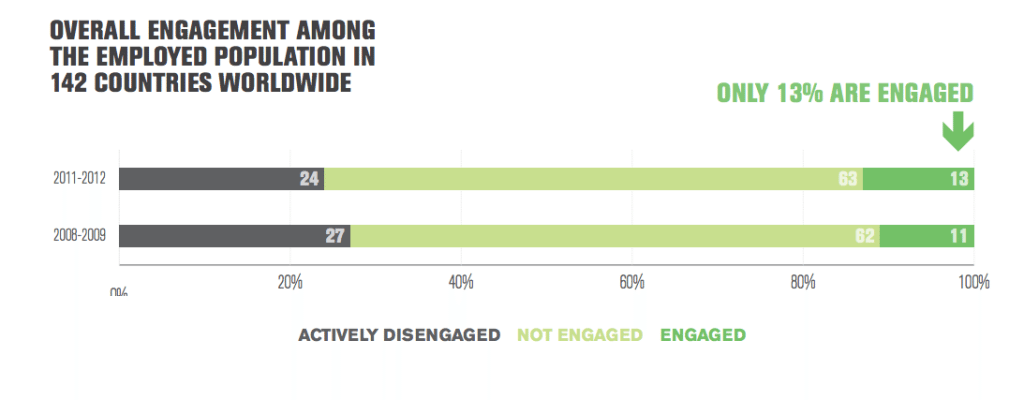
- A recent study of 2,300 employees on “employee activism” discovered that social media helps create the kind of engaged employees who act as company advocates and draw visibility to their workplace.
- The same study discovered that 50% of employees are posting messages, pictures or videos in social media about their work, and a third of them are doing so without any encouragement from their employer.
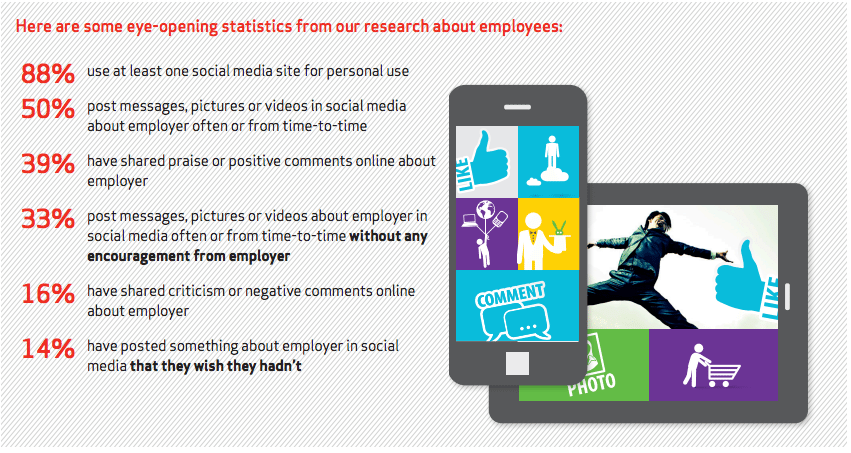
With just a bit of guidance, brands can expand their social media reach as well as their employees’ happiness by involving them in social media strategy.
The 5 steps that transformed our social strategy
At 15Five, we shifted our social media strategy several months ago to leverage the entire team. As a result, we have seen a dramatic increase of traffic to our homepage and our blog, and an increase in leads.
Here are the 5 simple steps that we put in place that any company can replicate:
1. Develop a persona
With thousands of diverse customers and followers on social media, how do we know who we are talking to: managers, directors, executives, or front-line employees?
With marketing and customer success taking the lead, we held an all-hands brainstorm session to develop a target persona.
We sketched out a real person including details such as what he does for work, how he enjoys downtime, even what kind of car he drives and what he eats for breakfast. We shared this with the entire team so they know who they’re trying to reach on social channels.

2. Create a social media repository
While employees can of course post our company’s content to their own social networks, we also want them to feel free to contribute their ideas and thoughts for posts on our company pages.
We created a “Social Media Content” board on Trello and encouraged employees to drop in interesting files, images, memes, questions, and links. This allows our social media manager to pull from a rich, diverse repository of content.
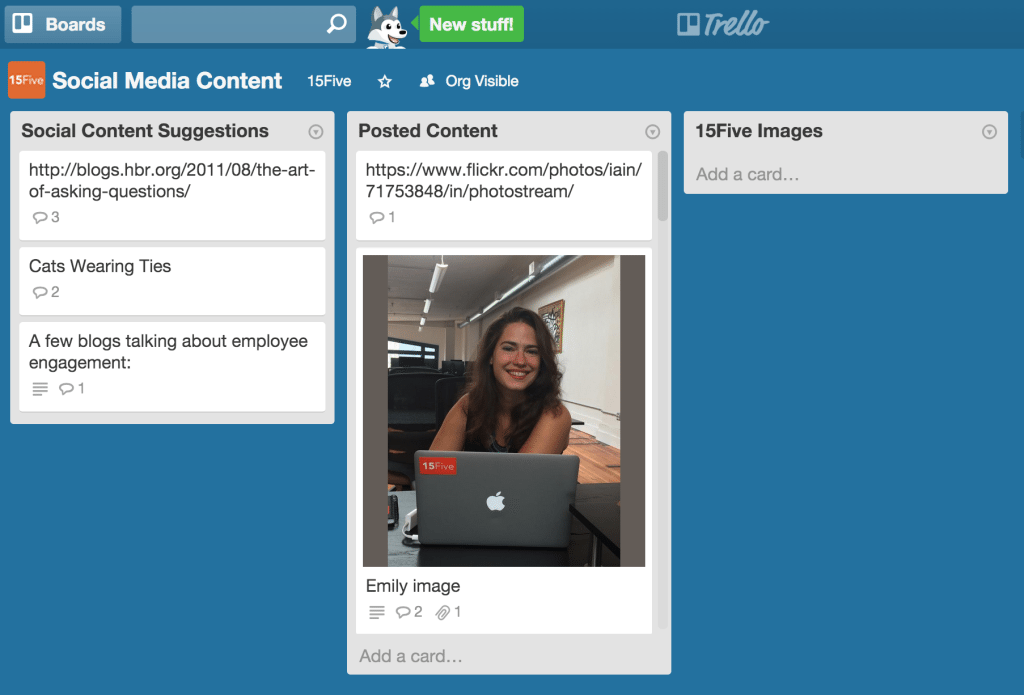
3. Resources and encouragement trump rules and regulations
When we first brought up the Trello board of social media content to the team, we didn’t want to overwhelm them so the ask was casual: “Don’t go out of your way searching for images or articles. As you discover things of interest, just drop the file or link in the appropriate place in the Trello board. And feel free to snap a pic of team outings.”
We didn’t want to transform something fun into just another task on their to-do lists by instituting policy, so we decided to let employees know that the practice was appreciated and encourage them to keep comments and posts truthful and positive.
This lines up with the tactics most brands are using to encourage social media activism in their employees:
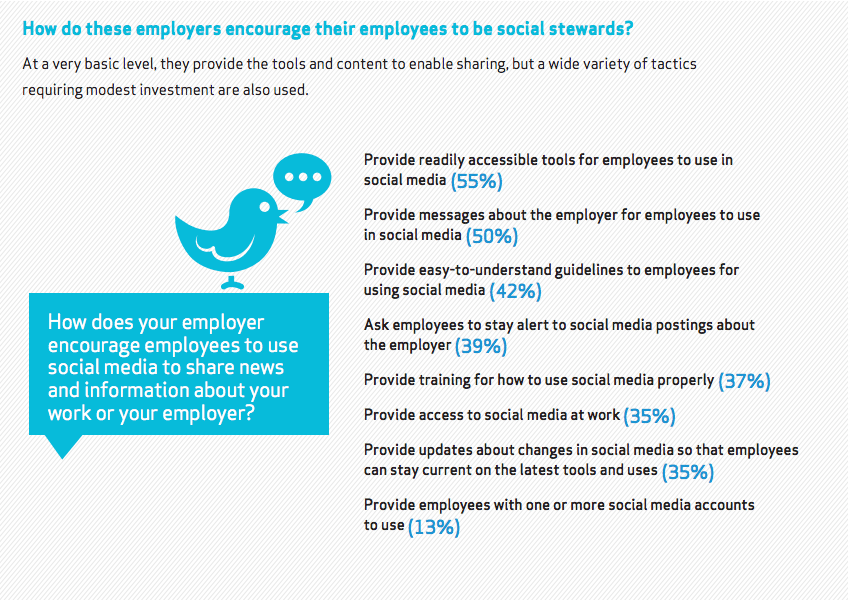
Empower employees to be themselves
As your employees promote your company, values, and culture on their own social media accounts, make sure they are empowered to maintain their individual, unique voices. Genuine posts are more important than marketing language. Just encourage them to be honest and portray the company in a positive light as they add their own spin to a post or topic.

Export your culture as well as your product
A strong culture translates through social channels and raises brand perception across the board. Employees might share images of the company picnic, the latest happy hour, and other fun outings just like they do in their personal lives.

4. Maintain a consistent voice
Once your content is in a central location, your brand ambassador or content manager can post it, optimizing to encourage conversation and click-throughs. (Your community manager might do a final review to keep the voice consistent and on-brand.)

5. Share social media stats so team members can see their impact
When team members can see that an article they found or a comment they wrote increased site traffic or sales, they will feel pride in their contributions and will be more likely to continue to share.
Using Buffer allows us to schedule posts on Facebook, Twitter, Google+, and LinkedIn, and Buffer converts all links to buff.ly format so that it’s easy to analyze their performance. (W
ant awesome social analytics like David? C now!)We use the data to understand which types of posts resonate with our audience on each social media platform. We also increase performance of posts by looking at what time of day and which days of the week have a greater impact.
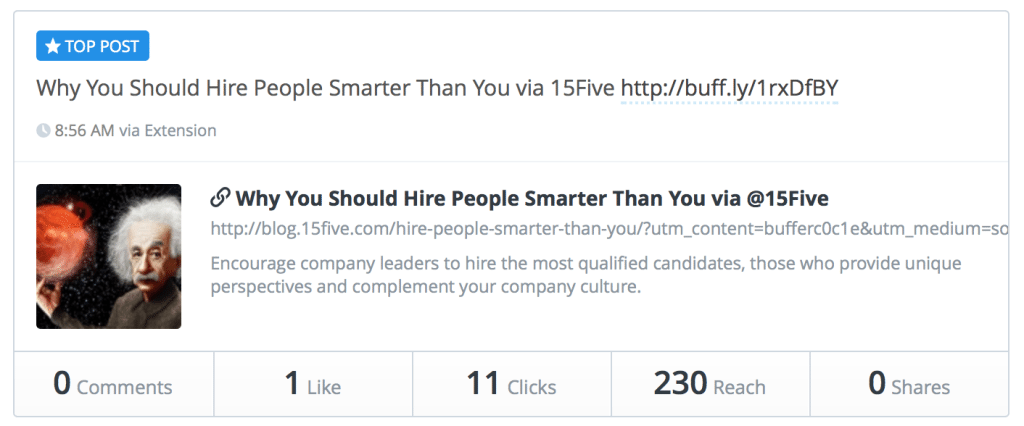
Google Analytics is also fantastic for seeing the impact of social referrals on generating leads:

Conclusion
Savvy employees are reading about your vertical, your competitors, and trends in the industry. They know which articles and blog posts are most relevant to your brand. Your employees are well versed in your marketing language and product positioning.
It just takes a little nudge to get them to share—and a little encouragement could make a big difference. Employees with socially-encouraging employers are significantly more likely to help boost sales than employees whose employers aren’t socially encouraging (72% vs. 48%, respectively).
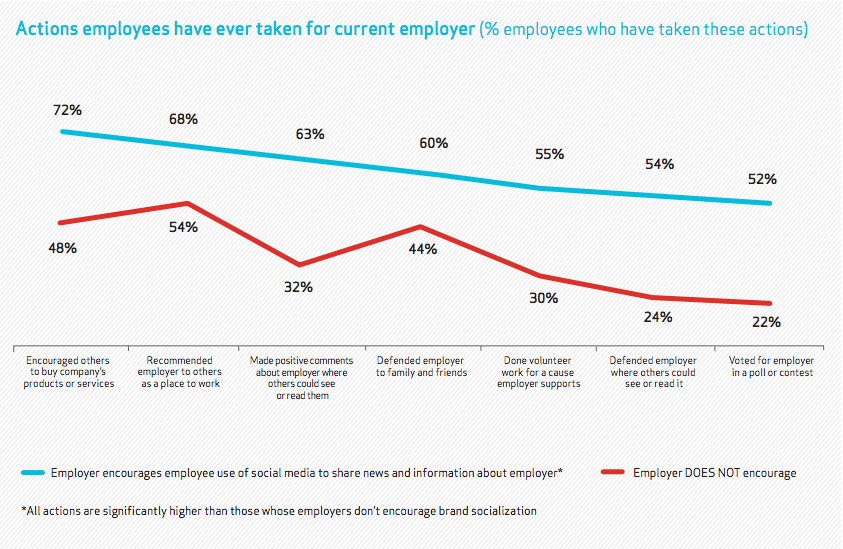
Leverage your employees’ desire to share their lives—including their work–on social media. Once you put a system in place, your social media presence will grow rapidly.
How do you engage employees in social media marketing? Tell me about it in the comments!
Try Buffer for free
190,000+ creators, small businesses, and marketers use Buffer to grow their audiences every month.


